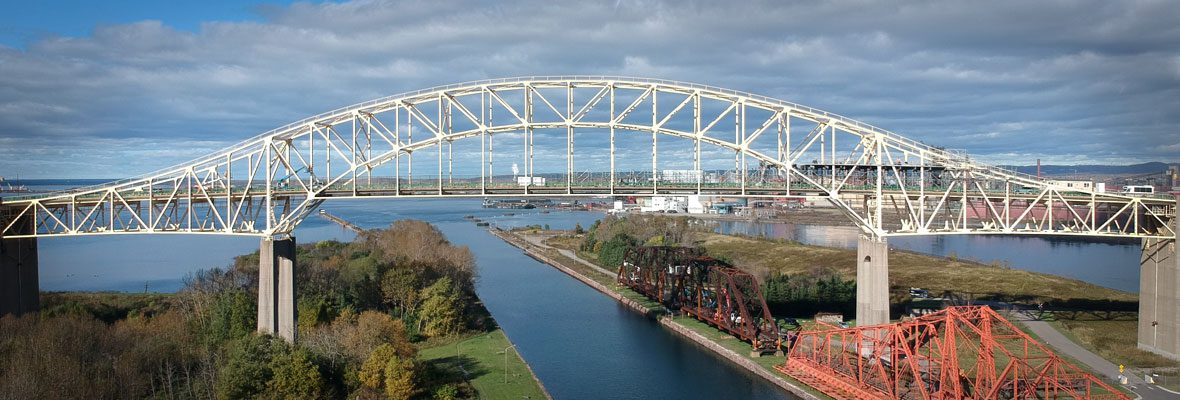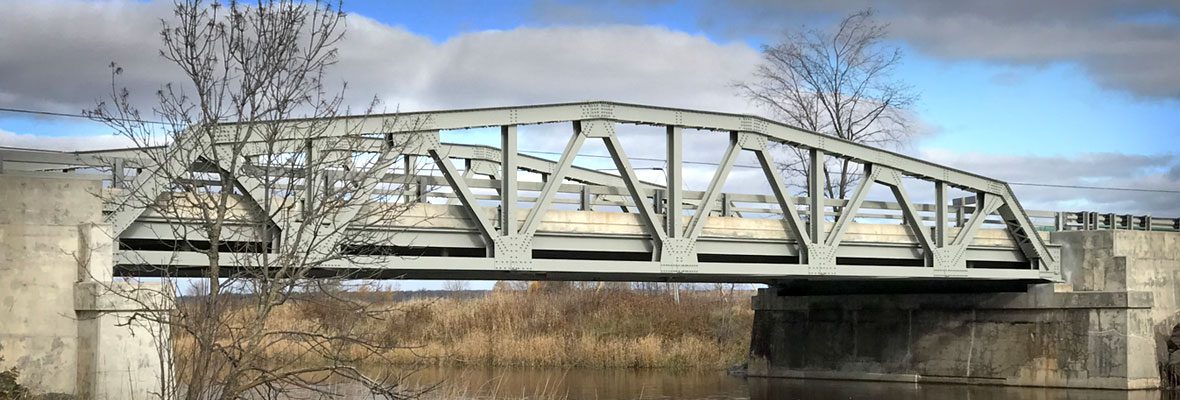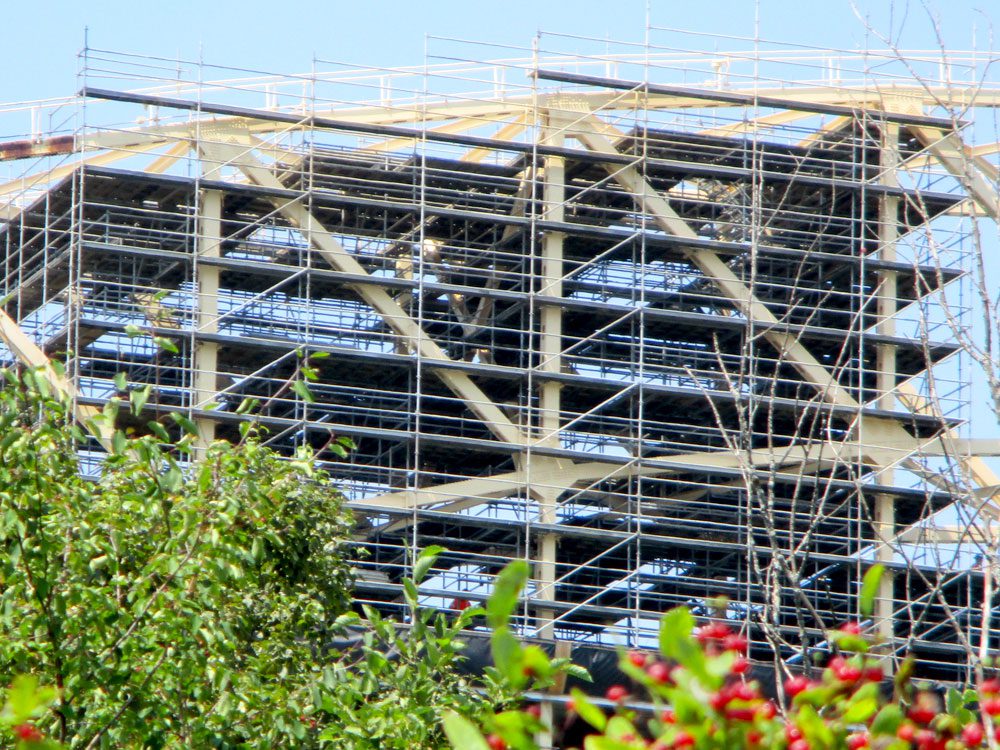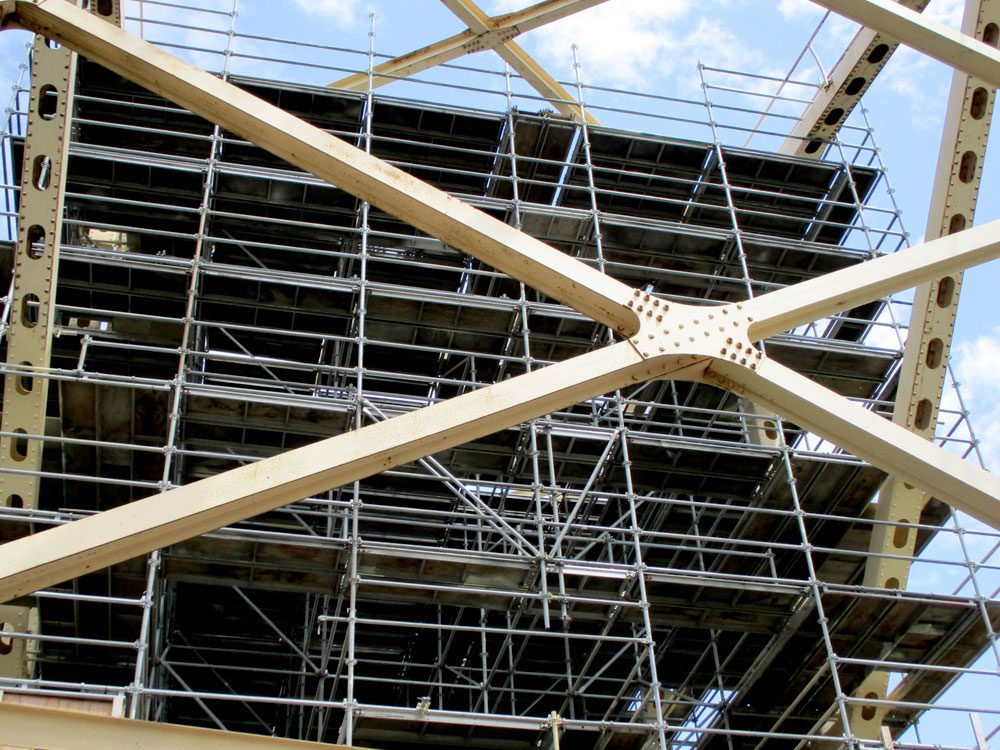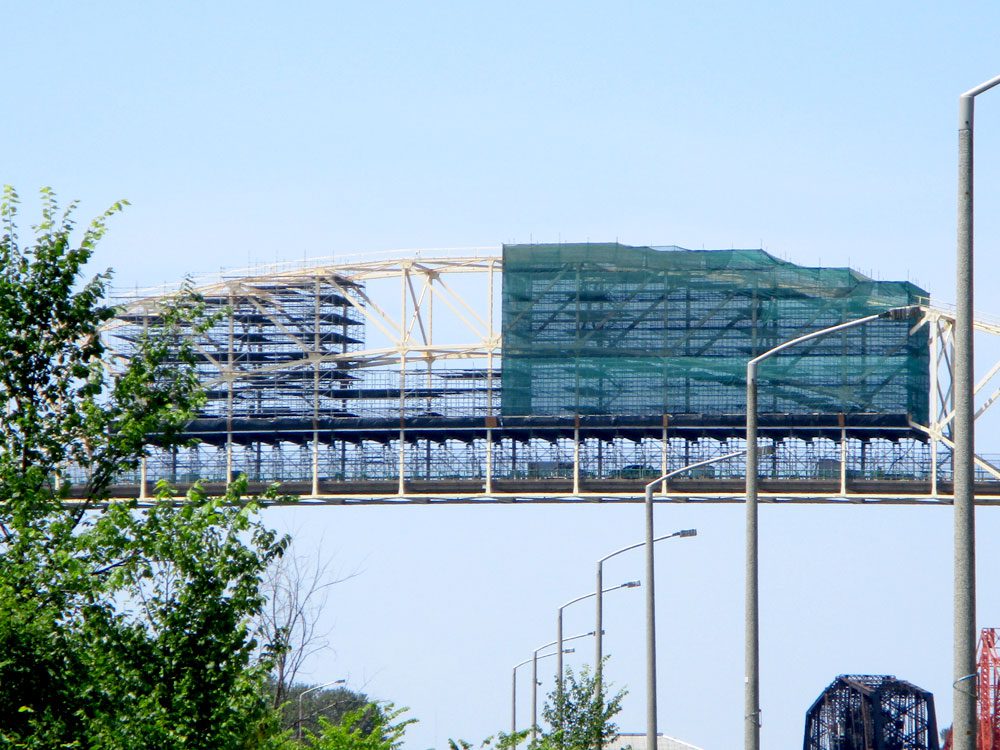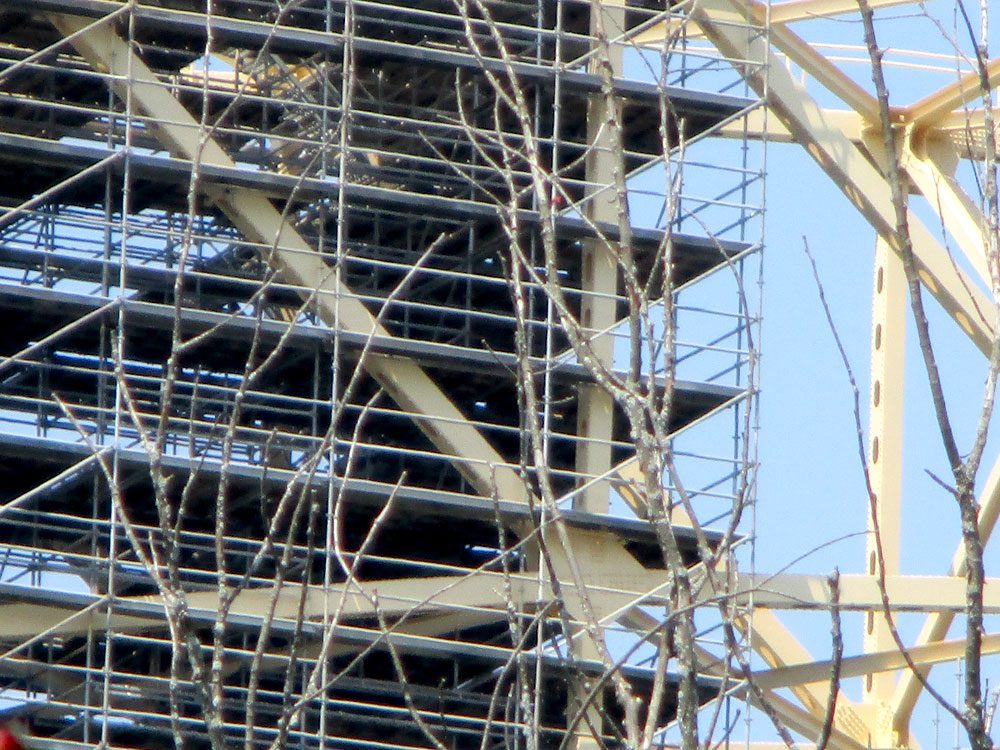BRIDGES & LARGE STRUCTURES
Over 40 years of building long-term relationships with clients and the community.
GCR completed its first bridge in Mattawa Ontario in the mid 80s. This early experience showed Jack Glavin that his new company possessed the skills to expand. From Windsor in the Southwest, to Cornwall in the east, to Hearst and Marathon in the North, GCR has proudly coated hundreds of bridges and large structures all over Ontario.
One of GCR’s most notable accomplishments was completing the Little Current swing bridge on Manitoulin Island between October and March while the bridge was in the locked position. If the cold winter conditions weren’t enough, the single-lane bridge had to remain open to traffic, as it was the only means on or off the Island. This of course meant long hours over 200 feet above the water and in biting cold weather.
Other bridges include: Arch Bridge Sault Ste. Marie; Goulais Rive Bridge in Goulais; and, Blackfriars Bridge in London.
More than just spraying, GCR’s experienced team works with the largest scaffold company in the province to provide customized accesses while ensuring state-of-the-art environmental protection when providing corrosion remediation and specialized coatings.
Please select a gallery for photos.
Surface Preparation:
The first step in preparation for a project is to ensure there is adequate protection for the surrounding environment. This includes constructing a work platform under, around and over the work area to allow workers direct access to every area the project. The work are must then be enclosed using a tarping system so that a negative air environment can be created with the use of GCR’s 2 diesel powered 28,000 CFM (Cubic Feet Per Minute) dust collectors. This mean air is drawn into the enclosure and though the dust collector and therefore prevents dust and debris from escaping the work area and the waterway in cases when we are working above a river. Once all these systems are in place the sandblasting can begin. GCR utilizes blasting pots that can hold form 50lb of sand to 16,000 pounds, depending on the size and scale project. In the case of onsite bridge work a nickel slag sand is used as it is the most cost effective product. Unlike in our shop environment were we recycle our blast media we dispose of sand in near by landfills after it is tested and posses no threat to the environment. Once the structure is completed blasted and all the sand is cleaned up we can move onto painting.
Painting:
Once the blasting is completed and the sand in cleaned up the priming and painted can begin. In most cases the primer must be applied on the same day to ensure the newly blasted steel does not start to flash rust, this is more of a problem in the humid summer months. In the of bridge painting a 3 Coat paint system is applied and it starts with a coat of zinc rich primer. We spray apply this primer coat to the entire structure and once it is dry we then apply a stripe coat to any nuts, rivets, back to back metal areas as well as any areas the are difficult to spray. This “stripe” coat is applied using brushes and rollers and ensures the primer is pushed into all the tight areas that a spray gun can’t get to or would cause runs in the paint. After the primer the intermediate coat is applied, and this is usually a high build epoxy coating. It is applied thicker than the primer coat and sprayed on. For “I” beam structures this coat usually does not require a stripe and we move on to the topcoat once it is dried. Unlike the primer coat we apply the “Stripe” coat before spraying the topcoat. By spraying the final coat is blends in any brush or roller marks and makes for a better overall finish.
Quality Control:
Most large manufacturing companies are registered with or follow ISO standards, in the industrial coatings world we following NACE (National Association of Corrosion Engineers) and SSPC (Steel Structures Painting Council) specifications. Both of theses association have specifications for preparation, application and recording of coatings. In recent years they have begun to work together to make sure there is uniformity in their requirements as well as working together on new Joint Publications. The Ministry of Transportation of Ontario (MTO) uses a Provincially approved document for its bridge painting, OPSS 911.PROV. This is done to ensure the quality of the work is compatible with the conditions in Ontario. Even though the specification is and Ontario Provincial Standard Specification (OPSS) if references SSPC & NACE throughout it. GCR has completed hundreds of projects under these guidelines and has developed our own internal documentation to ensure compliance with Provincial standards. As a large portion of the work we do is not for the province (MTO) but for Cities and Municipalities our compliance with the provincial standards meets or exceeds that of Cities and Municipalities as they base their work on provincial standards. To meet these requirements we use up to date inspection equipment that is calibrated annual according to industry standards. DeFelsko is an industry leader in coating thickness gages and inspection instruments. We use theses gauges in every step of our processes. After blasting is completed the profile of the steel needs to be measured to ensure it is within limits for primer application. This is done though the use of Testex tape and the PosiTector Replica Tape Reader Probe. Once the proper profile is confirmed we need to make sure the steel temperature, air temperature, humidity and dew point meet paint manufactures requirements with the use of the PosiTector Dew Point Meter. If the limits are in the correct range we are ready to spray. After the primer or paint is applied and cured we will need to check the Dry Film Thickness (DFT) of the each coat to make sure is falls in the ranges set out in OPSS 911. If the paint thickness is correct we can move onto the next coat. We repeat the Dew Point Meter reading and spray again. This process is repeated for all coats. All the DelFelsko Gauges either record them on the device or in the case of the PosiTector SmartLink the information is sent straight to your smart phone and the Positector App. At that point it can be sent to our desktop computer and used in our quality control documentation.
Put our facility, experience and capabilities to work for your company.
HOW CAN WE HELP?
Does your company have recoating needs? Please fill out this form and we’ll get in touch with you.
OFFICE LINE
+1 (226) 421-2442
INQUIRIES
WORKING HOURS
Mon – Thu: 6:00 – 5:00
Fri: 6:00 – 3:00


